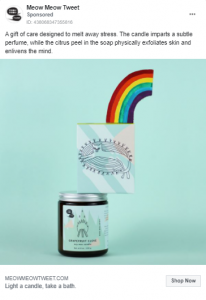
The fight for attention in recipient inboxes grows ever-more ferocious, to a point where some client-side marketers are beginning to question the validity and effectiveness of email marketing.
And while others may now view email marketing as old school, it is at the very heart of all customer relationship management (CRM) programmes, including marketing automation (MA), the current new and shiny communications channel.
What’s the problem?
One issue that we have noticed in client conversations in recent times, is that some people think that CRM and MA are solutions to prospect engagement in themselves. That is to say, flicking the CRM or MA system switch does the job alone.
This is a very long way from reality, as CRM and MA systems are just that – systems. What really matters is the communication itself, how it is written and within that, how it attracts and engages recipients. While some of this is technical, much of it is people-focused.
So here are five tips on briefing your agency, and getting your emails read:

Make it personal
If your contact database is properly configured, your digital agency should be able to insert the recipient’s name in the subject line, or any number of other details personal to that recipient. This adds a level of intimacy and engagement with recipients that means they’re more likely to read on.
Ask your agency to use this same data configuration and start by inserting the recipient’s name into the salutation line, so that the reader feels they are in direct and personal communication with the sender.

Stay visible
Research indicates that readers are spending only 15-20 seconds on scanning each email they open 1, meaning in that period your email has either had a click-through or has been dumped.
This indicates the importance of clear, visible headlines, kept above the fold (the part of the email that appears to a viewer first, without scrolling or opening) and grouping any other highly relevant information, such as important links close to the headline.
Images and even infographics above the headline may distract, so ask your agency to factor immediacy into all areas of graphic work.

Keep it short
Given that your email message is only going to be around for 15-20 seconds, you may think this is a good reason to keep it short. And it is. But you will find that many agency-side content writers will often want to ram as much information into a single email as is possible.
But the issue is two-fold: the longer the message, the less chance there is of content being completely read, and the more content, more links and more offers there are the more dense the message, and the less likely it is that critical click-throughs will happen.

Analytics: know what prospects want
Rather than firing off subsequent emails into the darkness, ask your agency to provide detailed website analytics during every campaign so you can see what links in your emails recipients are using, and what they are looking at.
That way, you can start to segment these email recipients into prospects not only through their level of interest, but by specific type of product or service interest and using segmentation, work to develop a higher level of engagement with those specifics.

Mixed messages
As the campaign builds, your agency’s analytics will start telling you the story of each email recipient. You will know if they responded to a link, how long they viewed it for and what else interested them while on your website.
This information is critical for accurate segmentation, allowing you to categorise these recipients (this can simply be done with an Excel spreadsheet) by where they are on their buying journey, and allowing you to separate the messaging to reflect this as the campaign moves to close the sale.
Old school?
 Email is still the most effective form of marketing channel: it is a primary form of communication, and is ubiquitous. In 2013, business email accounts totalled 929 million mailboxes, and this figure is expected to grow to reach over 1.1 billion by the end of 2017 2.
Email is still the most effective form of marketing channel: it is a primary form of communication, and is ubiquitous. In 2013, business email accounts totalled 929 million mailboxes, and this figure is expected to grow to reach over 1.1 billion by the end of 2017 2.
And while there are those both client-side and on agency teams who will tell you email is old school, there’s something much older school that is a part of this email effectiveness and success and of equal, critical importance: laser-sharp communication.
1 EmailLabs
2 The Radicati Group
(56)
Report Post






